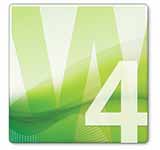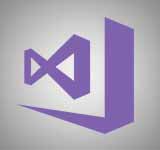1. Amaya

2. Adobe Muse

3. Alleycode HTML Editor

4. Atom

5. BBEdit

6. BlueFish

7. Brackets

Adobe Brackets is an HTML editor for developing web applications. It is primarily in HTML, CSS and JavaScript written and was designed by Adobe launched as a community project. Brackets is an open source project licensed under the MIT license and managed on GitHub. The milestone of Release 1.0 was only reached more than three years after the start of the project in early November 2014. Brackets is for Windows, macOS and Linux available for download. Behind the scenes, brackets use some third-party open source projects, including jQuery, Less, RequireJS, Lodash, Mustache, and CodeMirror as the actual code editor. For desktop presentation, the Chromium Embedded Framework is used to provide the most similar representation possible on different platforms. A live preview is currently only possible with Google Chrome. Brackets support extensions that add more functionality. Extensions are currently available for debugging or adding browser-specific CSS prefixes, as well as linters and autocomplete tools.
8. CoffeeCup HTML Editor

9. CudaText

10. EditPlus

EditPlus is a text editor with FTP, FTPS and sftp capabilities. Serving as a good Notepad replacement, it also offers many impressive features for programmers. EditPlus supports customizable syntax highlighting for PHP, ASP, Perl, HTML, CSS, Java, JavaScript, C/C++ and VBScript.
11. Emacs

12. Google Web Designer

13. HTML-Kit

HomeSite was an HTML editor. It offers many helpful functions ("wizards") to solve standard tasks. HomeSite was originally developed in 1995 by Nick Bradbury, and in March 1997 by Allaire Corp. accepted. In 2001, Allaire was again taken over by Macromedia, and in 2006, Macromedia by Adobe. On May 26, 2009, Adobe announced that the development and distribution of HomeSite will be discontinued, the recommended upgrade path is Adobe Dreamweaver. The type of a document is recognized by HomeSite on the <!DOCTYPE> entry. Once the type has been recognized, it offers the appropriate commands. Supported formats include XHTML, JavaScript, VBScript, Perl, ActiveX, ColdFusion, VTML, Java, JSP, WML, ASP, CSS, PHP, SQL, DHTML, and more. It also supports code completion and insight tags. By means of code completion, tags to be opened are automatically closed again. The Insight tags show the programmer the possible attributes of a tag that he can select. For easy editing of CSS files, the program TopStyle Lite is included in the package. Is only available as an English-language basic version, but German language pack is available.
15. Microsoft Expression Web

16. Microsoft FrontPage

17. Microsoft Publisher

Microsoft Publisher is a desktop publishing application from Microsoft. It is often seen as an entry-level program and as a program to have more control over the elements of a page than in Microsoft Office Word, but less than in programs such as InDesign, PublishOne, or QuarkXPress. Historically, Publisher has been less popular with professional, commercial printers, especially when compared to other desktop publishing software. The program is only available for Windows. This position of Publisher as a basic program is further reinforced by problems such as fonts and inserted objects that are not available on the machines of professional service providers (although Publisher does come with tools to bundle related files in self-extracting applications).
18. Microsoft SharePoint Designer

19. Microsoft Visual Studio

Microsoft Visual Studio is an integrated development environment (IDE) for Windows, Linux and macOS. It supports multiple programming languages, such as C++, C#, Visual Basic .NET, F#, Java, Python, Ruby and PHP, as well as web development environments, such as ASP.NET MVC, Django, etc., at which one must add the new capabilities online under Windows Azure in the form of the editor Monaco. Visual Studio allows developers to create web sites and applications, as well as web services in any environment compatible with the .NET platform (as of the .NET 2002 version). Thus, applications can be created that communicate between workstations, web pages, mobile devices, embedded devices and game consoles, among others.
20. Microsoft Visual Web Developer Express

Mozilla Composer is a free and open source HTML editor, and a web creation module of the Mozilla Application Suite. It is used to create web pages, e-mails, and text documents easily. Composer is a graphical user interface (GUI) WYSIWYG (What You See Is What You Get), allows editing of pages by acting directly on the final graphics. You can also view, write and edit the HTML source code.
22. NetBeans IDE

NetBeans is a free integrated development environment, made primarily for the Java programming language. There is also a significant number of modules to extend it. NetBeans IDE is a free product with no use restrictions. NetBeans is a highly successful open source project with a large user base, an ever-growing community. Sun MicroSystems founded the NetBeans open source project in June 2000 and continues to be the primary sponsor of the projects (Sun Microsystems is currently managed by Oracle Corporation). The NetBeans platform allows applications to be developed from a set of software components called modules. A module is a Java file that contains java classes written to interact with the NetBeans APIs and a special file (manifest file) that identifies it as a module. Applications built from modules can be extended by adding new modules. Because the modules can be developed independently, applications based on the NetBeans platform can be easily extended by other software developers.
23. Notepad++

24. PHPEdit

25. PSPad

26. Sublime Text

Sublime Text is a text editor and source code editor written in C++ and Python for plugins. Originally developed as an extension to Vim, over time it created its own identity, which is why it still retains a vi- like editing mode called Vintage mode. Can be downloaded and evaluated for free. However it is not free or open source software and a license must be obtained for its continued use, although the evaluation version is fully functional and has no expiration date. Sublime Text is a cross-platform editor for text and source code. The appearance of the program is inspired by the text editor Vim. Its functionality can be expanded through plugins. The first version was released on January 18, 2008. Version 2.0.2 was released on July 6, 2013.
27. UltraEdit

Wix.com is a company in the field of website construction kit with headquarters in Tel Aviv, Israel. The company is headquartered in Tel Aviv, with additional offices in San Francisco, New York City, Dnipro and Vilnius. Wix is sponsored by investors Insight Venture Partners, Mangrove Capital Partners, Bessemer Venture Partners and Benchmark Capital. Since November 5, 2013 Wix is at the NASDAQ listed WIX. Wix thus succeeded in the biggest IPO by an Israeli company. Wix.com is a cloud-based online platform for creating HTML5 websites and mobile websites. The Website Builder makes it possible to integrate functions into the own homepage, which were developed by Wix or third-party providers. Wix is based on the freemium business model. Extra services beyond the pure homepage must be purchased for a fee. Wix is seen in the various reviews as one of the best platforms to create their own homepage. In particular, the flexibility and the large selection of template designs is praised. A disadvantage is the missing possibility to change afterwards to another template. In addition Wix is not suitable for deep websites with many subpages. In October 2012, Wix launched its app market to sell third-party apps developed using the company's Web technology. App developers can use Wix's Software Development Kit to create their own web apps and make them available to users worldwide.
29. openElement

openElement is a freeware website design and authoring application published by Element Technologie.
Adobe Dreamweaver is the HTML editor, web page output from Adobe Systems, formerly known as Macromedia Dreamweaver from Macromedia. This program is widely used by web developers because of its interesting features and ease of use. Dreamweaver, like other HTML editors, edit files locally and then upload them to a remote web server using FTP, SFTP, or WebDAV. Dreamweaver CS4 now supports the Subversion version (SVN) control system.
31. AOLpress

32. ActiveState Komodo

33. Adobe GoLive

34. Adobe PageMill

35. Apple iWeb

36. Arachnophilia

37. BlueGriffon

38. CKEditor

39. Claris Home Page

40. Coda

41. Codelobster

42. E Text Editor

43. EZGenerator

44. Eclipse with the Web Tools Platform

45. EmEditor

46. FirstPage

47. Freeway

48. Froala Editor

49. Geany

50. HoTMetaL

51. HotDog

52. Hyper Publish

53. Jimdo

54. KompoZer

55. Macaw Web Editor

56. Maqetta

57. Microsoft WebMatrix

58. Mobirise

59. NetObjects Fusion

60. Netscape Composer

61. NoteTab

62. Nvu

63. Opera Dragonfly

64. PhpStorm IDE

65. Quanta Plus

66. RJ TextEd

67. RocketCake

68. Sandvox

69. SciTE

70. SeaMonkey Composer

71. Silex website builder

72. Smultron

73. SnapEditor

74. TED Notepad

75. TOWeb

76. TextMate

77. TextPad

78. TextWrangler

79. TinyMCE

80. TopStyle

81. Vim

82. VisualEditor

83. WebPlus

84. WebStorm

85. Webflow

86. WorldWideWeb

87. tkWWW

88. Aptana


